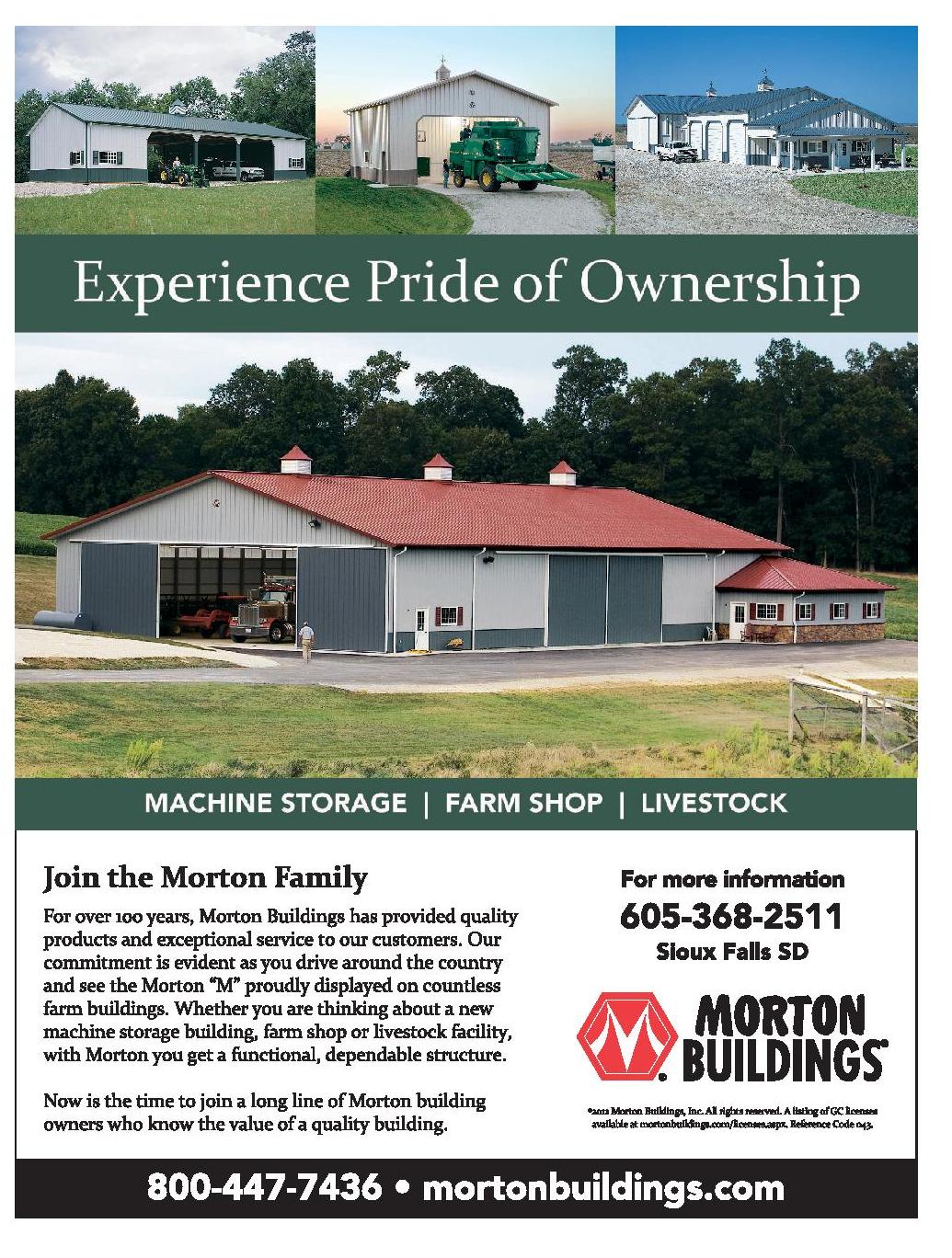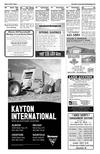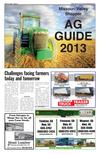11.pdf



March 12, 2013 • Page 11
Shop online at www.missourivalleyshopper.com
? CHALLENGES
From Page 10
workers who have been
schooled in one way of
agriculture may have a significant impact on labor
supply and the vitality of
farming as a career.
Younger adults who are
knowledgeable in technology may no longer seek
out agricultural careers.
Decrease in farming
as an occupation
The United States
Environmental Protection
Agency says that only
about 960,000 Americans
claim farming as their
principal occupation. As
that figure has dwindled,
the average age of farmers
continues to rise, as the
Bureau of Labor Statistics
notes that roughly 40 percent of the farmers in this
country are 55 years old or
older. This has led to concerns about the long-term
health of family farms
throughout the United
States.
Environmental
concerns
Many farmers have
come under scrutiny for
how farming impacts the
environment. A growing
emphasis on sustainability
and conservation has led
many people to protest
certain farming practices.
Protesters claim that certain practices, such as raising livestock, can pollute
water, while the use of fertilizers and chemical pesticides is bad for the environment. Many farmers,
however, have altered their
methods to be more environmentally friendly and
self-sustainable in the
process.
Climate change is
another environmental
issue farmers must deal
with. Strong storms and
severe droughts have made
farming even more challenging.
Financial fall-out
The ongoing recession
of the last half-decade has
also affected farmers. In
November of 2012, the
United States Bureau of
Labor Statistics indicated
that the unemployment
rate within the agriculture,
forestry, fishing, and hunting industries was at 13.6
percent, far higher than
the national unemployment rate. As a result,
Indexes to Guide Bull
Buying Decisions
Greater public awareness of agricultural challenges
could help the industry in the future.
many farm families have
found themselves stuck
between a rock and a hard
place, as rising costs for
equipment and technology are being coupled with
decreasing profits and rising unemployment.
Further complicating
matters is competition
from corporations and
international food producers who have made it
difficult for family farmers
to turn a significant profit.
Many family farmers rely
on loans and lines of credit to survive, but thanks to
changes in the financial
sector that saw banks
become less willing to
extend lines of credit,
some farmers are facing
bankruptcy.
Though it can be easy
for those who do not work
in the agricultural industry to overlook the struggles facing today's agricultural professionals, a
greater understanding of
those struggles and the
challenges that lay ahead
can benefit the industry
and its employees down
the road.
www.missourivalleyshopper.com
BROOKINGS, S.D. Today's cattle ranchers
may experience information overload when trying
to make genetic purchasing decisions.
"There is an abundance
of information available
to ranchers to help make
genetic decisions. The
number of traits for
which we have Expected
Progeny
Differences
(EPDs) has increased to
include carcass traits as
well as traits such as
stayability and disposition. All that information
doesn't make the selection
task easy," said Warren
Rusche, SDSU Extension
Cow/Calf Field Specialist.
"It can be a bit like picking your 20 favorite
George Strait songs; some
hard decisions need to be
made."
He adds that one challenge when using EPDs is
balancing between different traits and what kind
of trade-offs cattle producers can afford to
make.
"Perhaps there are two
bulls you're considering;
one
offers
excellent
growth performance and
acceptable carcass traits,
the other just meets your
target for growth but the
bull's marbling EPD is
exceptional. Traditional
trait EPDs don't do a very
Drivers & Owner
Operators Wanted INTERESTEDto IN THISadSPOT?
Call 665-5884 place your here.
PREMIUM BEST
TRANSPORT
1501 Wek Road
Yankton, SD 57078
605-665-9202
Fax 605-665-0162
To l l - F r e e : ( 8 0 0 ) 3 5 9 - 4 0 8 4
Johnson Electric, LLP
Gary Johnson • Chris Merkel
Rick Merkel • Ben Merkel
• Rural • Residential • Commercial
• Electrical • Telephone
• We Trench H20 Lines, Footing & Electric Lines
• Our Bucket Truck Reaches 50’ PLUS
• We Set Poles
FAST COURTEOUS
SERVICE
214 CAPITAL ST.,
YANKTON
665-5686
good job of telling us
which one of these two
bulls will be more profitable to own," he said.
EPDs also don't address
costs.
"We all know that
selecting for more growth
and more maternal milk
in the sires of our replacements can increase our
weaning weights," Rusche
said.
Cattle producers also
know that those higher
producing cows require
more nutrients - and that
costs money. In this situation, Rusche says producers could use a tool that
evaluates the value of the
outputs and also considers
input
costs.
Fortunately those kinds of
tools are becoming more
available in the form of
selection indexes.
Selection indexes, Rusche
explains, use the trait
EPDs in an economic
model to put a dollar
value on an individual
bull. He refers to a graph
and shares an example.
"For example, the Angus
Association publishes a
Weaned Calf Value ($W)
index that considers birth
weight, weaning weight,
maternal milk and mature
cow weight," he said,
referencing Table 1.
? INDEXES , Page 12
























 Previous Page
Previous Page





